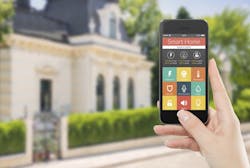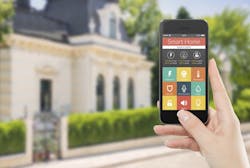Are you sick and tired of hearing about the Internet of Things (IoT) yet? I am. Most of you have probably been inundated with articles, e-mails, and blogs about IoT products, webinars, software, conferences, market studies and services.
I can’t deny that this is a hot topic: Practically every electronic company has jumped on this bandwagon. It seems like everyone has bought into the prediction of 50 billion or so connected devices by 2020. Everyone wants a piece of that action. After all, the industry needs the “next big thing” to drive progress and profitability. But will IoT really be the big hit of the decade, just a successful niche, or a big disappointment?
The connected home is one of the early adoption categories of IoT. Many consumers already have wireless Internet thermostats, video monitors, or security systems controlled by a smartphone. And appliance manufacturers are building in wireless nodes for networking around the home. Some of the proposed uses are a bit farfetched. Others lament that all the home devices do not talk to one another.
Thank goodness for that. I do not want my refrigerator talking to my thermostat or other device without my permission. Do you really want your bidet talking to your toaster? I still hold the philosophy that just because you can do something doesn’t mean you should. Many connected home applications are just that—they are contrived and just flat unnecessary.
A huge percentage of consumers feel that way. And that backs up Beecham’s conclusion that “…there is no evidence yet of connected devices in the home taking off in a big way.” Nevertheless the connected home market is going to be a big one, so long as the devices are cheap and simple enough to install and use.
The whole idea of IoT is not a new one. The concepts have been known for decades. It used to be called telemetry or data acquisition or supervisory control. Remember those? IoT takes the basic idea to a whole new level, extending it to a wider range of industries and applications, thanks to small low power wireless devices and cheap low power processors (and the cloud, of course). Medical tracking and fitness measurement devices and other wearables are good examples.
The real growth sectors of IoT appear to be industry and the utilities, or the industrial IoT. Industry already uses the technology of IoT in plants, factories, and pipelines, but now monitoring and control will be improved and more widely deployed as better devices become available and prices decline. Utilities will use IoT methods to implement the smart grid on a wider scale.
As for other proposed IoT sectors, success is yet to be determined. Some companies are still looking for a business model and others are mulling over the security aspects of applications. Another major issue nagging the IoT movement is the big data aspect. All of the connected devices are going to generate a massive amount of data. Some studies indicate that in existing IoT systems 50 to 70 % of the collected data is never used or analyzed. Clearly some data analytics solutions are needed for some applications.
I am not an IoT denier, but I do see growth as slower than predicted based upon the hype. Some say that 2016 will be the year of IoT, but I doubt it. I see another year of R&D and standards resolution. Yet, overall the year should be positive for everyone—with revenue to come later.
About the Author

Lou Frenzel Blog
Communications Technology
Click here to find more of Lou's articles on Electronic Design.

